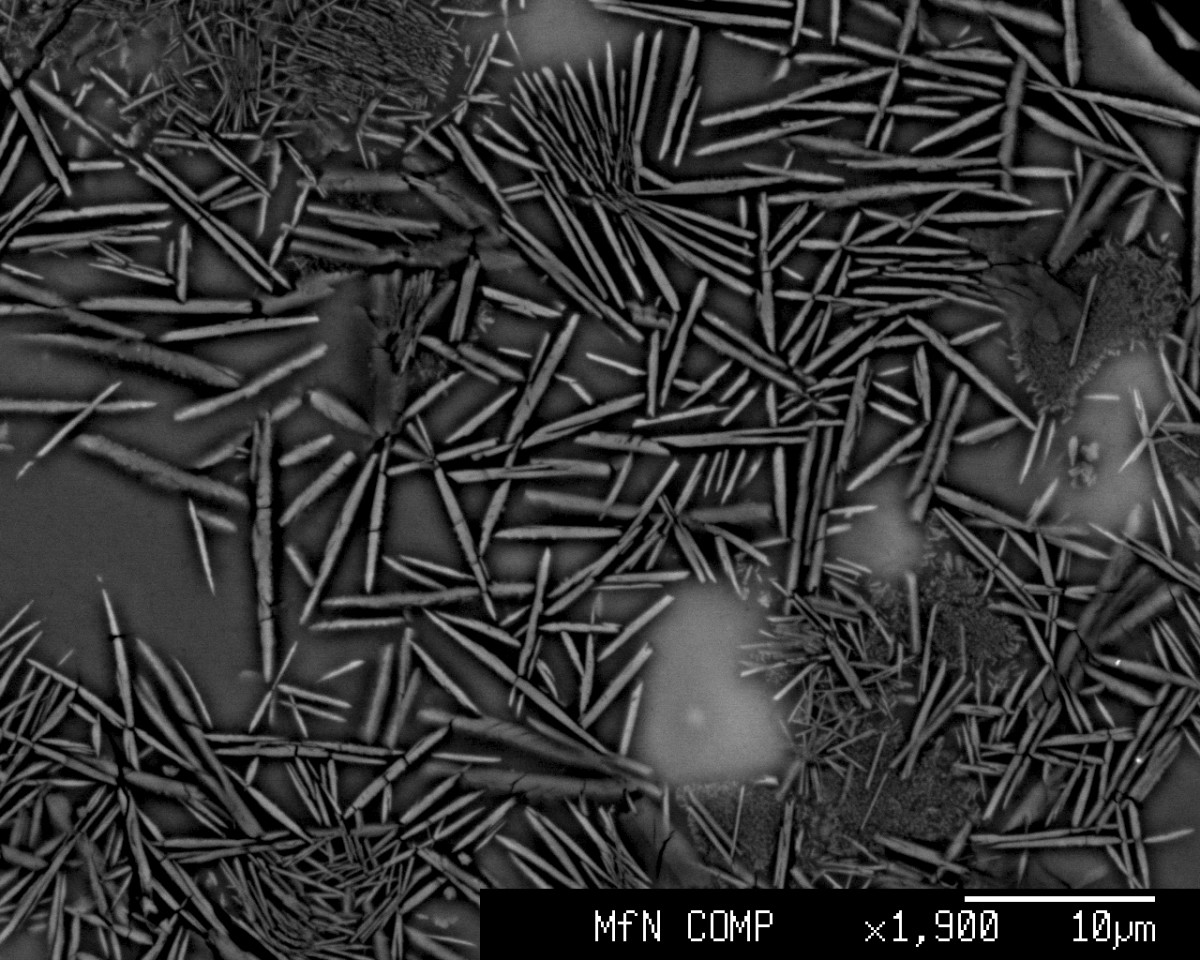Researchers have discovered a new mineral in a meteorite from the Moon. Named donwilhemsite, the mineral appears to form under high pressures and may play a crucial role in the rock cycle deep within the Earth.
Made mostly of calcium, aluminum, silicon and oxygen atoms, donwilhelmsite was discovered in a meteorite called Oued Awlitis 001, which was found in 2014 in the Western Sahara desert. The team used transmission electron microscopes to study a sample of the meteorite and identify the crystal structure of the new mineral.
Specifically, donwilhelmsite was found in the meteorite’s shock melt zones, where the rock melts in the immense pressure and temperature as it hurtles into the Earth’s atmosphere and collides with the surface, then later cools and hardens again.
Interestingly, these conditions are similar to those found deep within our planet’s mantle, giving us a handy glimpse into the kinds of minerals that might be down there, where we can’t easily study them. With that in mind, the researchers say that donwilhelmsite could be naturally forming at depths between 460 and 700 km (285 and 435 miles) below the surface.

Museum für Naturkunde Berlin, Ansgar Greshake
Since this meteorite is composed of rocks similar to those that make up the Earth’s crust, the team believes that donwilhelmsite probably plays a key role in transporting sediments from the crust – in the form of ancient tectonic plates being pushed deep into the planet – down through the transition zone, which separates the upper and lower mantle.
If donwilhelmsite sounds like a name, well that’s because it is. The new mineral was named after Don Wilhelms, a lunar geologist who was part of the team that analyzed data and samples returned from the Apollo missions.
The team describes the new mineral in the journal American Mineralogist.
Source: Helmholtz Centre Potsdam
Source of Article